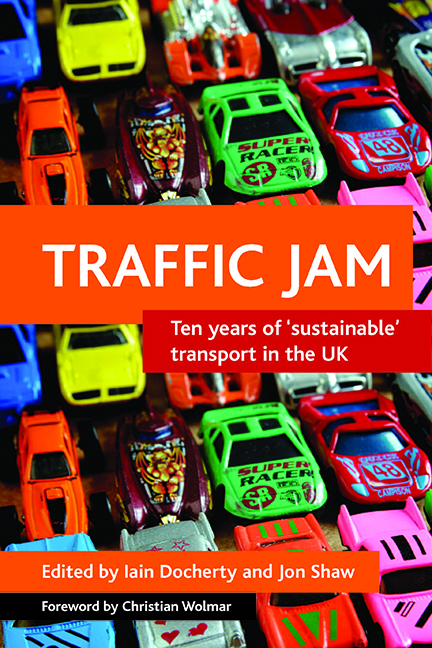Book contents
- Frontmatter
- Dedication
- Contents
- List of tables, figures and boxes
- Foreword
- Preface and acknowledgements
- List of acronyms
- Notes on contributors
- Part One Policy and politics
- Part Two Progress in policy implementation
- Part Three Ten years since A new deal for transport – signposts to the UK’s transport future?
- Index
five - Buses and light rail: stalled en route?
Published online by Cambridge University Press: 21 January 2022
- Frontmatter
- Dedication
- Contents
- List of tables, figures and boxes
- Foreword
- Preface and acknowledgements
- List of acronyms
- Notes on contributors
- Part One Policy and politics
- Part Two Progress in policy implementation
- Part Three Ten years since A new deal for transport – signposts to the UK’s transport future?
- Index
Summary
Better-quality public transport was heralded by incoming Labour ministers as the key to persuading some car users to switch modes for some journeys, thereby reducing car use and urban traffic congestion (DETR, 1997, 1998). As large-scale improvement was needed quickly, the main focus was on buses, which are the main mode of local public transport everywhere except in Central and Inner London. The image change sought was encapsulated in the title of the buses policy document From workhorse to thoroughbred (DETR, 1999), and Quality Partnerships (QPs) were seen as the way to produce better local bus services and reverse the 50-year decline in bus use. Voluntary cooperation between local authorities could give buses priority on the roads and in return private bus companies would invest in higher-quality buses. Light rail was considered to be expensive and unable to deliver improvements quickly but still viable where it was part of a coherent urban public transport strategy. Improved public transport was also a prerequisite for making restraint of car traffic acceptable. The 2000 Transport Act introduced the idea of Statutory Quality Partnerships (SQPs) to cover facilities and vehicle standards in a legally binding agreement, and also offered councils an option of partial reregulation in the form of Quality Contracts (QCs) if partnerships were not delivering patronage growth targets (Davison and Knowles, 2006). Quality Contracts would give exclusive access to designated routes but would not be approved by the government unless they were the only practicable way to meet local authority targets. Also in 2000, Transport 2010: The 10-year plan (DETR, 2000) introduced national targets for Britain of a 10% growth in local bus usage and a 100% growth in light rail usage by 2010/11; 25 new light rail schemes were also to be built. Whereas the concept of an integrated transport policy had been promulgated UK-wide in 1998, the governance landscape in relation to the formulation and delivery of transport policy objectives and targets was fundamentally changed by devolution in 1999/2000 (Chapter Two). This chapter demonstrates that these new governance arrangements have promoted differences in both bus and light rail policies and their outcomes in the constituent parts of the UK over the last few years.
- Type
- Chapter
- Information
- Traffic JamTen Years of 'Sustainable' Transport in the UK, pp. 97 - 116Publisher: Bristol University PressPrint publication year: 2008



